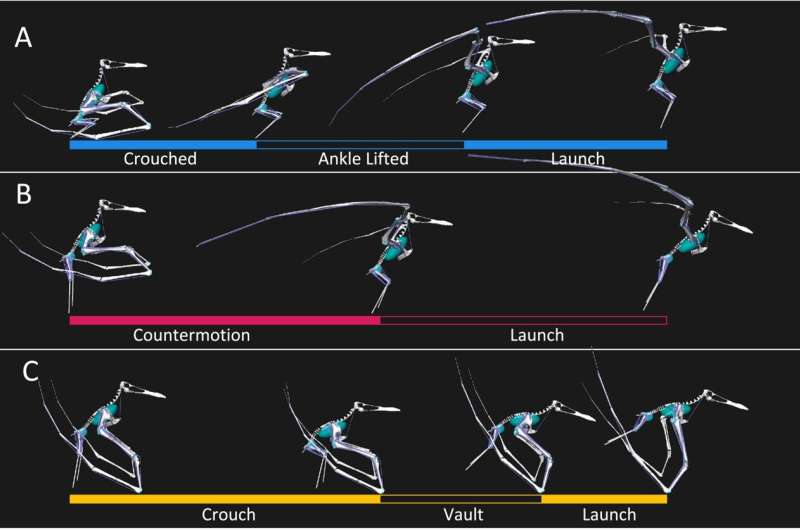This article has been reviewed according to Science X's editorial process and policies. Editors have highlighted the following attributes while ensuring the content's credibility:
fact-checked
peer-reviewed publication
trusted source
proofread
Giant prehistoric flying reptile took off using similar method to bats, study finds

Findings of a study, published in PeerJ, provide new insights into how pterosaurs managed to take flight despite reaching sizes far larger than modern animals. The research sheds new light on the flight initiating jumping ability of these animals, some of which had wingspans of over ten meters.
The study, carried out by scientists at the University of Bristol, Liverpool John Moores University, Universidade Federal do ABC and the University of Keele, follows years of analysis and modeling of how muscles interact with bones to create movement in other animals and is now being used to start answering the question of how the largest flying animals known managed to get off the ground.
The team created the first computer model for this kind of analysis of a pterosaur to test three different ways pterosaurs may have taken off: a vertical burst jump using just the legs like those used by primarily ground-dwelling birds, a less vertical jump using just the legs more similar to the jump used by birds that fly frequently, and a four-limbed jump using its wings as well in a motion more like the take-off jump of a bat.
By mimicking these motions, the researchers aimed to understand the leverage available to push the animal into the air.
"Larger animals have greater challenges to overcome in order to fly making the ability of animals as large as pterosaurs to do so especially fascinating," Dr. Ben Griffin, the lead author of the study, said.
"Unlike birds which mainly rely on their hindlimbs, our models indicate that pterosaurs were more likely to rely on all four of their limbs to propel themselves into the air."
This study examines one of the long-standing questions about the underlying biomechanics of the pterosaur. This research not only enhances the understanding of pterosaur biology but also provides broader insights into the limits and dynamics of flight in large animals. By comparing pterosaurs with modern birds and bats, the study highlights the remarkable evolutionary solutions to the challenge of powered flight.
More information: Benjamin W. Griffin et al, Modelling take-off moment arms in an ornithocheiraean pterosaur, PeerJ (2024). DOI: 10.7717/peerj.17678
Journal information: PeerJ
Provided by University of Bristol



















